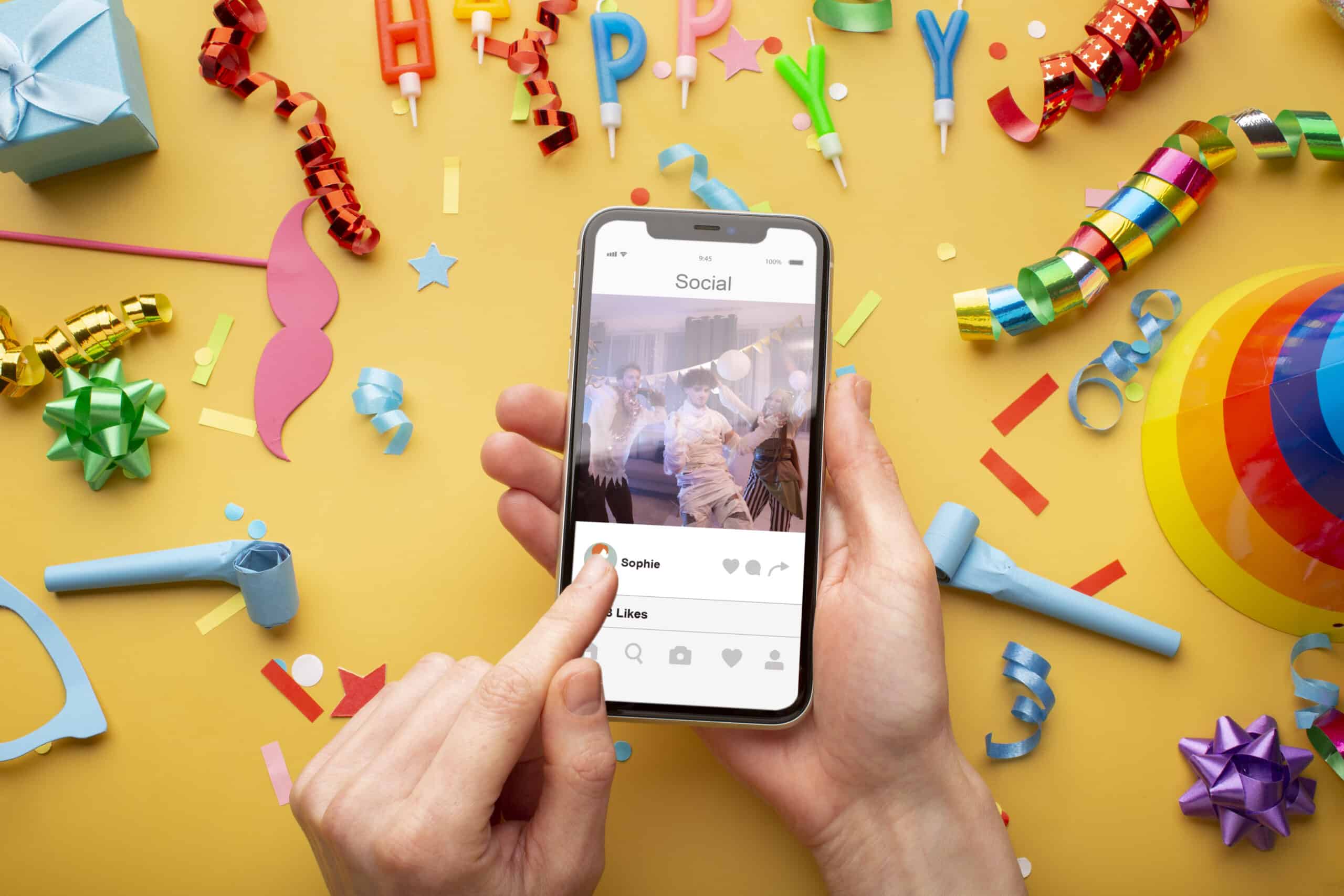
Email Marketing with SMS: A Powerful Duo for Your Campaigns
If you’re looking for effective ways to improve your digital marketing communications, combining email and SMS could be a practical solution.
This approach uses the detailed, content-rich capabilities of email alongside the immediate impact of SMS’s high open rates. When used together, these marketing channels ensure that your communications are received and read at the right time.
In this guide, we’ll offer practical marketing strategies for using email with SMS to make your communications more timely and impactful.

Get Started With Business Texting
View our pricing, and start your free trial with Textellent today!
Key Benefits of Email Marketing
Email marketing is a direct form of marketing that uses electronic mail to communicate commercial or fundraising messages to an audience. It involves sending emails to prospects and customers to promote products, services, or events or simply to build and nurture customer relationships.
These are the key benefits of email marketing:
- You can tailor each email to fit the recipient’s preferences and behavior
- You don’t need a large budget to send emails to a large group of people
- Allows you to track key metrics like open rates, click-through rates, etc.
- You can reach a global audience with just a click
How SMS Complements Email Marketing
When you combine SMS (Short Message Service) with email marketing, you get the best of both worlds.
Email marketing is great for sharing detailed information, while SMS marketing is perfect for quick, urgent messages. Together, they make a powerful method that keeps your audience informed and engaged.
While emails provide detailed content that can include rich media and extensive information, they might not always be opened right away. SMS, with its near-perfect open rates of 98%, can grab attention immediately, especially for urgent or time-sensitive information.
Boosting Open Rates
Emails are great for sharing detailed information, but they might not always be opened right away. SMS has a near-perfect open rate of nearly 98%, much higher than the usual 20-30% for emails.
You can use SMS to give a quick heads-up to check the inbox for more detailed content, which can help increase the number of people who open and read your emails.
Clear and Direct Messages
SMS messages are short and to the point, which is great for sending important notifications quickly. This can work well with emails by providing a quick summary or a call-to-action that encourages people to open an email for more information.
Avoiding Spam Filters
Unlike emails, which can often end up in the spam folder or get lost in a crowded inbox, SMS messages typically reach the recipient directly. Sending a text message to alert recipients about an important email can help ensure that your key text messages are seen.
Reaching More People
One big plus with SMS is that it doesn’t need an internet connection. This means you can reach people even in areas with poor internet service, which is great for ensuring critical information gets through to as many people as possible.
Adding a Personal Touch
SMS has a more personal feel, which helps your communications feel more special and intimate. Following up an email with a quick SMS can reinforce the message, make people feel more valued, and encourage a warmer response.
Perfect for Mobile Users
With more and more people using their mobile phones for just about everything, SMS is a perfect fit. It allows you to reach people directly on their phones, which complements email campaigns that might be viewed on desktops or laptops.
Use Cases for Email Marketing With SMS
Here are some practical use cases where combining these two channels can improve the effectiveness of your campaigns:
Welcome Series and Onboarding
For new customers, a well-crafted welcome series can set the tone for their relationship with your brand.
You can start with an email that provides a comprehensive introduction to your company, products, and services. This can include links to useful resources, tutorials, or customer service information.
Then, follow this up with an SMS that thanks them for signing up and perhaps offers a first-purchase discount or reminds them to check their email for more details. This approach ensures that new customers receive both a warm welcome and immediate engagement prompts.
Promotions and Sales Alerts
When running promotional campaigns, time-sensitive offers can benefit greatly from SMS notifications.
You can send out an email with detailed information about the promotion, including terms, conditions, and benefits. Then, complement this with an SMS that alerts customers to the start of the promotion and encourages them to open the email for more details.
This can be particularly effective during limited-time offers or flash sales, as the immediacy of text messages helps capture immediate attention and action.
Event Notifications and Reminders
A combination of email and SMS can ensure higher engagement and attendance rates for events, whether virtual or in-person. You can use email to send detailed information about the event, including agenda, speakers, and registration instructions.
As the event date approaches, send SMS reminders to registered participants with brief details such as date, time, and a link to the event page. This helps keep the event top-of-mind and reduces no-shows.
Transactional Updates
For e-commerce businesses, combining SMS and email marketing can improve customer service and satisfaction during the order fulfillment process.
You may send an email confirmation immediately after a purchase with a detailed receipt and expected delivery dates. After that, follow this with SMS updates when the order is shipped, out for delivery, or if there are any changes in delivery status.
This keeps customers informed in real time and boosts their shopping experience.
Customer Feedback and Surveys
After a customer interaction, such as a support call or a purchase, send an email with a detailed customer satisfaction survey. You can send a follow-up SMS reminding them to complete the survey if they haven’t already done so. Include the link for convenience.
SMS can increase response rates by providing a convenient prompt, while email ensures that they have the space to provide detailed feedback.
How You Can Combine Email Marketing with SMS
Using SMS services like Textellent with your email marketing can ramp up your business communication strategy.
Textellent offers sophisticated SMS features that, when combined with your email marketing campaigns, can create a well-rounded, multi-channel approach. Here’s a simple guide on how you can combine your email marketing efforts with Textellent’s SMS solutions:
Step 1: Choose A Compatible Platform
Pick an email marketing platform that works well with Textellent. Make sure both systems can easily communicate with each other, possibly through direct connections or linking software.
This setup lets you share data and coordinate campaigns smoothly between your emails and SMS messages.
Step 2: Manage Your Contacts in One Place
Keep your contact lists organized and consistent across both email and SMS. You can upload your contact list and any associated segmentation tags into Textellent and make sure the groups (segments) match up. Always make sure you have permission to send SMS to these contacts to keep privacy and rules in mind.
Step 3: Create Combined Campaigns
Plan your SMS marketing campaigns that combine the best features of email and SMS. You can send detailed messages like newsletters or special offers through email and then use Textellent to send quick SMS messages for instant alerts, reminders, or actions.
For example, if you email a promotion, you can send a quick SMS to remind people when the deal is about to end. You can even use Textellent’s multimedia messaging service (MMS) capabilities to make your texts look visually appealing.
Step 4: Automate Your Messages
You can set up automatic systems that send an SMS if certain actions happen with your emails. For instance, if someone doesn’t open an event email within two days, you can trigger an SMS message to be sent to them to check their email. This helps make sure important messages get noticed.
Step 5: Check What Works
Use the measurement tools from your email platform and Textellent to see how well your integrated campaigns are doing.
You may examine metrics like the number of people who open emails, click on links, and respond to SMS. Then, use this information to tweak your approach, adjust timing, and improve your messages.
Step 6: Follow the Rules
Make sure all your messages follow legal requirements, such as the TCPA. Textellent has features that help manage SMS compliance, such as opt-in and opt-out mechanisms and further compliance rules that can be established for various locations.
It’s important to keep track of these details for both email and SMS.
Step 7: Keep Your Messages Consistent
Your emails and SMS marketing messages must sound like they’re coming from the same place. Consistent tone and messaging strengthen your brand and help people see your communications as part of a unified strategy.
Email Marketing With SMS Workflow Example
Now that you understand how to combine your email marketing with SMS, here is a workflow example to help you get started:
Initial Announcement via Email
Start by sending an email to announce the sale. This email should include detailed information about the discounts, featured products, and the duration of the sale, along with rich visuals and links to the sale items on your website.
Follow-Up with SMS
Two days after the initial email, send an SMS to those who opened the email but did not click through to the website. This SMS should be a brief reminder of the sale, emphasizing the urgency and including a direct link to the sale page.
Consider adding an image to the text message to make it more noticeable and impactful.
Reminder Email
As the sale nears its end, send a reminder email one day before the sale concludes. This email should remind customers that the sale is ending soon and highlight best-selling items that are still available at discounted prices.
The language should encourage urgency, which prompts recipients to act quickly.
Final SMS Reminder
On the last day of the sale, a few hours before it ends, send out a final SMS to all subscribers. This SMS message should be a short, urgent reminder that the sale is about to close. Include a direct link back to the sale page.
Elevate Your Marketing Strategy With Textellent
Ready to combine the detailed richness of emails with the quick-hit impact of SMS? Let Textellent help you step up your marketing game!
This SMS marketing platform simplifies the process of sending messages about reminders, alerts, and follow-ups. While your emails provide detailed content, Textellent’s SMS texting solutions deliver timely reminders and quick updates to ensure critical information is never missed.
Get started with a free trial, or book a demo consultation now!
FAQs About Email Marketing With SMS
How can I effectively time the SMS follow-ups to my emails?
Timing your SMS correctly is crucial. A good rule of thumb is to send an SMS reminder about 24 to 48 hours after the initial email if no action has been taken. Consider a shorter interval for urgent updates and monitor engagement patterns over time to help you refine these timings.
What kind of content should I prioritize in SMS versus email?
SMS should focus on brief, action-oriented messages that require immediate attention or response. Email is better suited for delivering more detailed content that educates, informs, or nurtures relationships. Keep SMS content direct and to the point, using emails to elaborate on topics or offers.
How do I ensure my integrated SMS and email campaigns are mobile-friendly?
Since most people read SMS and email on mobile device, ensure your emails are responsive and easy to read on small screens. Links in both SMS and email should lead to mobile-optimized landing pages. Testing across different devices is crucial to maintaining a seamless user experience.





